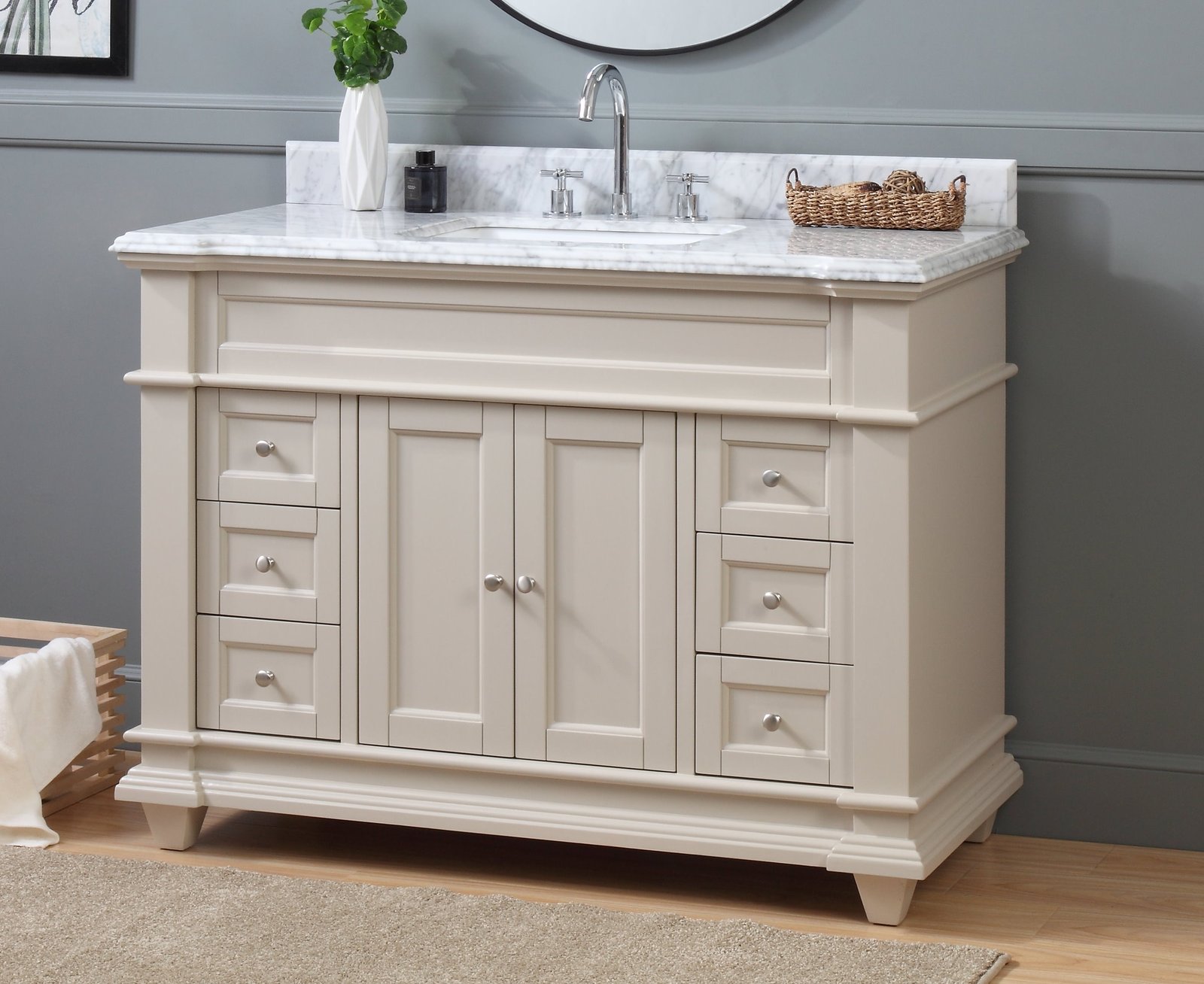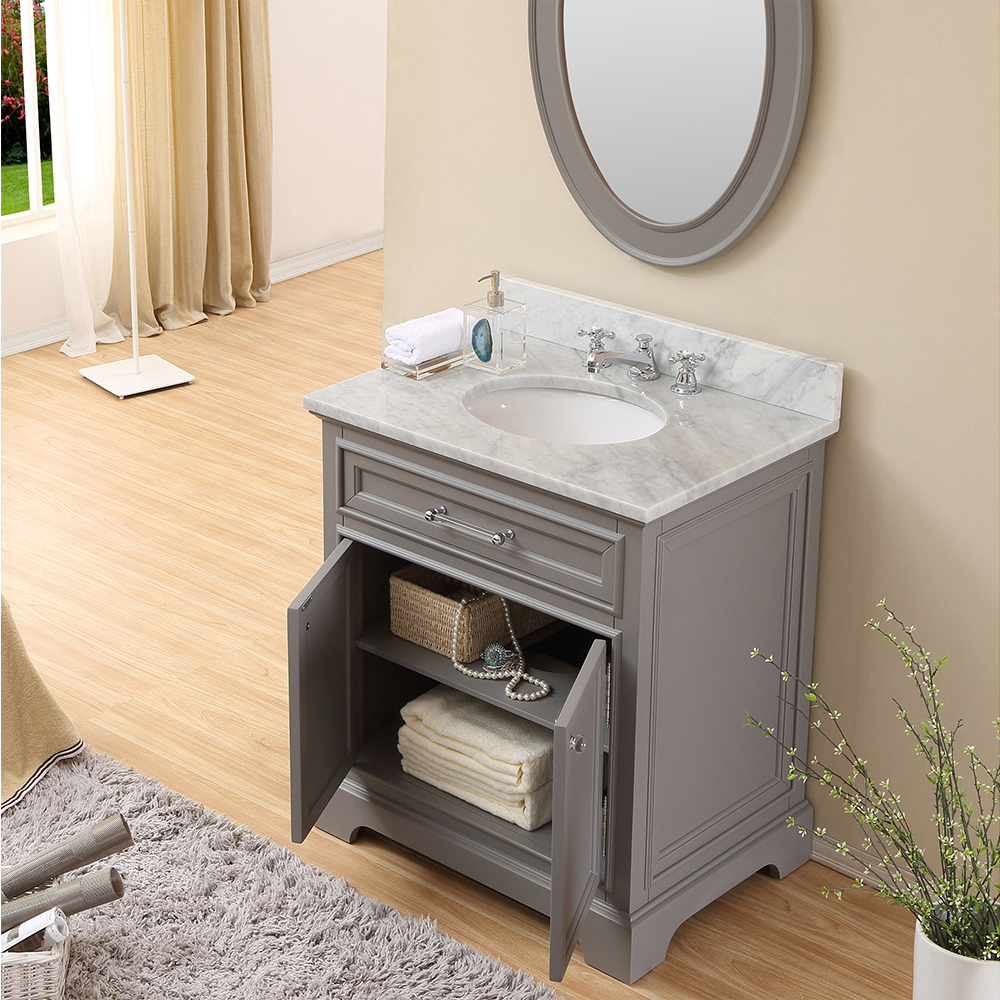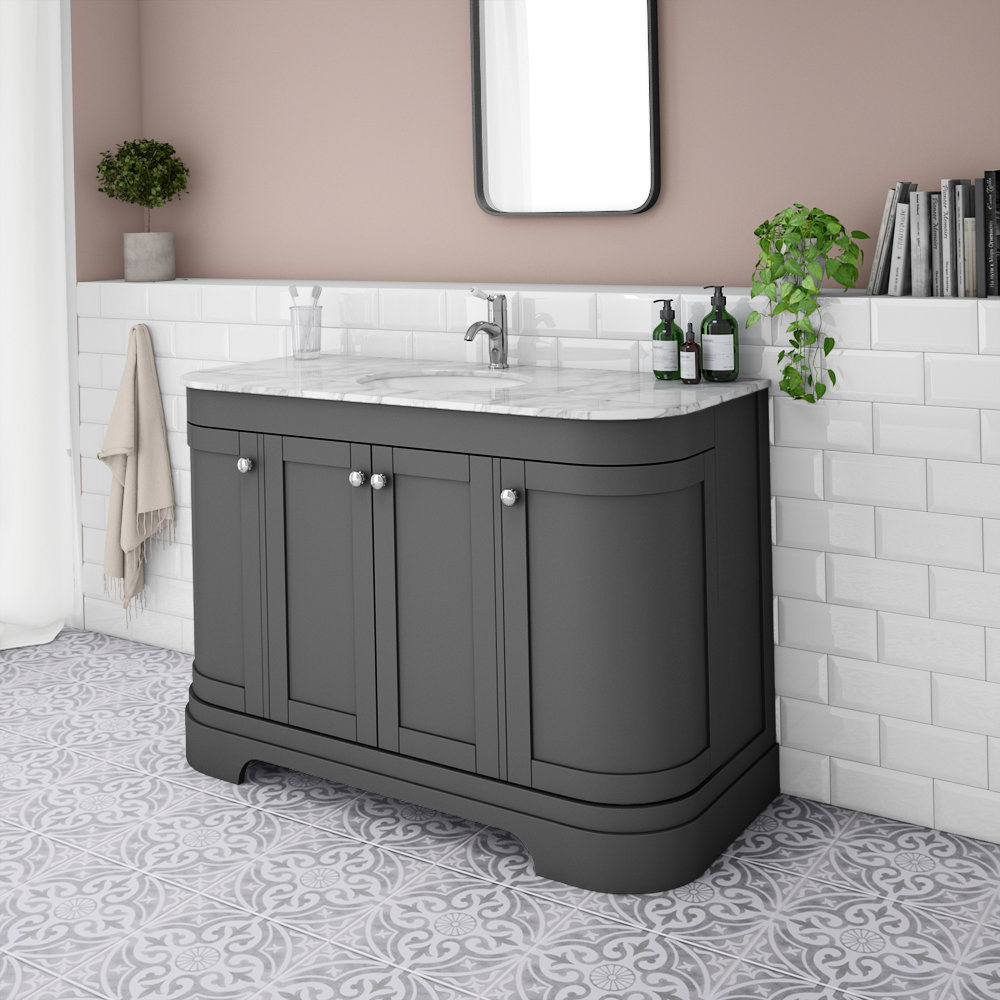Understanding Bathroom Vanity Units

The bathroom vanity unit is a crucial element in any bathroom, serving as a functional storage solution and an aesthetic focal point. It’s more than just a countertop and cabinet; it’s a blend of form and function that sets the tone for the entire space. Understanding the components, styles, and materials involved in vanity units can help you make an informed decision for your bathroom.
Components of a Bathroom Vanity Unit
A bathroom vanity unit typically consists of several essential components that work together to create a cohesive and functional unit. These components include:
- Countertop: The countertop is the primary surface of the vanity, providing a space for the sink, toiletries, and other bathroom essentials. It’s usually made of materials like granite, marble, quartz, or laminate.
- Sink: The sink is the primary fixture of the vanity, providing a space for washing hands and face. Sinks come in various styles, including undermount, vessel, and drop-in, each offering a different aesthetic and functionality.
- Cabinet: The cabinet provides storage space for towels, toiletries, and other bathroom necessities. Cabinets can be constructed with various materials, including wood, laminate, and MDF, and can feature drawers, shelves, and doors for organization.
- Base: The base supports the countertop and cabinet, providing stability and structural integrity to the vanity unit. Bases are typically made of wood or metal and can be designed in various styles, from simple and minimalist to ornate and decorative.
- Hardware: Hardware includes the handles, knobs, and hinges that add functionality and visual appeal to the vanity unit. Hardware comes in a wide range of materials, finishes, and styles to complement the overall design of the vanity.
Styles of Bathroom Vanity Units
Bathroom vanity units are available in a variety of styles to complement different bathroom designs and aesthetics. Some popular styles include:
- Traditional: Traditional vanity units often feature ornate details, such as carved wood, decorative moldings, and elaborate hardware. They typically have a warm and inviting aesthetic, often with a classic or vintage feel. Think of a vanity with a rich mahogany finish, intricate carvings, and brass hardware.
- Modern: Modern vanity units prioritize clean lines, minimalist designs, and sleek finishes. They often feature simple geometric shapes, smooth surfaces, and chrome or brushed nickel hardware. A minimalist vanity with a sleek white countertop and a chrome faucet exemplifies this style.
- Contemporary: Contemporary vanity units blend modern elements with a touch of sophistication. They often feature unique materials, bold colors, and innovative designs. A vanity with a concrete countertop, geometric sink, and a bold color scheme would be considered contemporary.
- Farmhouse: Farmhouse vanity units embrace a rustic and cozy aesthetic. They often feature distressed wood, open shelving, and farmhouse-inspired hardware. Imagine a vanity with a reclaimed wood countertop, a pedestal sink, and simple iron hardware.
Materials Used in Vanity Construction
The choice of materials for a bathroom vanity unit significantly impacts its durability, aesthetics, and cost. Common materials include:
- Wood: Wood is a popular choice for vanity construction due to its natural beauty, durability, and versatility. Different wood species offer varying grain patterns, colors, and levels of hardness. Common choices include oak, maple, cherry, and walnut.
Wood vanities can be stained or painted to match your bathroom decor, providing endless customization options.
- Laminate: Laminate is a cost-effective alternative to wood, offering a durable and water-resistant surface. It comes in a wide range of colors, patterns, and textures to mimic the look of natural materials like wood, stone, and metal.
Laminate vanities are often a good choice for budget-conscious homeowners who want a durable and stylish option.
- Stone: Stone countertops, such as granite, marble, and quartz, are known for their elegance, durability, and unique patterns. They add a touch of luxury and sophistication to any bathroom.
Stone countertops are a more expensive option, but they offer a timeless and elegant look.
Factors to Consider When Choosing a Bathroom Vanity

Choosing the right bathroom vanity is crucial for both functionality and aesthetics. It’s the centerpiece of your bathroom, setting the tone for the entire space. To make the best decision, consider several key factors that will ensure your vanity perfectly complements your needs and style.
Vanity Size, Best bathroom vanity units
The size of your bathroom vanity is paramount. Measure your available space carefully to ensure the vanity fits comfortably without encroaching on walkways or creating a cramped feeling. A vanity that is too large will dominate the room, while one that is too small will leave you lacking storage and counter space.
Storage Needs
Think about your storage requirements. Do you need ample drawers and cabinets for toiletries, towels, and other bathroom essentials? Or are you more minimalist and prefer open shelving? Consider your lifestyle and the amount of storage you typically need. A vanity with drawers offers concealed storage, while open shelving provides easy access but can make the bathroom feel less organized.
Sink Type
The sink type is a significant design element. Popular choices include:
- Undermount Sinks: Seamlessly integrated into the countertop, creating a sleek and modern look.
- Vessel Sinks: Stylish and eye-catching, these sit atop the countertop, offering a unique design statement.
- Drop-in Sinks: A classic choice, these sit directly into the countertop, providing a straightforward and practical option.
Countertop Material
The countertop material impacts both aesthetics and durability. Popular choices include:
- Granite: Durable and resistant to scratches and heat, offering a natural and elegant look.
- Quartz: Non-porous and stain-resistant, making it a low-maintenance option with a wide range of colors and patterns.
- Marble: Luxurious and timeless, but susceptible to scratches and stains, requiring careful maintenance.
- Laminate: Affordable and versatile, offering a variety of styles and colors, but less durable than natural stone.
Bathroom Design and Style
Your bathroom vanity should complement the overall design and style of your bathroom. Consider the existing decor, color scheme, and fixtures. A traditional bathroom might call for a vanity with ornate details and a classic design, while a modern bathroom might benefit from a minimalist and sleek vanity.
Popular Bathroom Vanity Styles and Trends: Best Bathroom Vanity Units

The bathroom vanity is a focal point in any bathroom, setting the tone for the overall aesthetic. It’s not just a functional piece of furniture; it’s a statement piece that reflects your personal style and taste. Understanding the various styles and trends in bathroom vanities can help you choose the perfect one for your space.
Popular Bathroom Vanity Styles
The style of your bathroom vanity should complement the overall design of your bathroom. Here’s a table showcasing popular bathroom vanity styles, their characteristics, and suitable bathroom aesthetics:
| Style | Characteristics | Suitable Bathroom Aesthetics |
|---|---|---|
| Traditional | Ornate details, carvings, raised panels, rich wood finishes, often with a double sink | Classic, elegant, formal, vintage, farmhouse, Victorian |
| Modern | Clean lines, minimalist design, sleek finishes like chrome or brushed nickel, geometric shapes, often with a single sink | Contemporary, minimalist, industrial, urban, Scandinavian |
| Contemporary | Blends traditional and modern elements, often with a focus on natural materials and organic shapes, a mix of wood and metal finishes | Transitional, eclectic, relaxed, casual, mid-century modern |
| Rustic | Reclaimed wood, distressed finishes, natural textures, often with a farmhouse sink | Country, cabin, lodge, farmhouse, casual |
| Industrial | Exposed metal, raw materials, dark finishes, often with a concrete or metal countertop | Urban, loft, edgy, minimalist, industrial |
Current Trends in Bathroom Vanity Design
Bathroom vanity design is constantly evolving, incorporating innovative materials, finishes, and functionalities. Here are some current trends:
- Floating Vanities: These vanities appear to float, creating a sense of spaciousness and modern appeal. They offer a clean, uncluttered look and are perfect for smaller bathrooms.
- Natural Stone Countertops: Materials like marble, granite, and quartz add a touch of luxury and sophistication. They are durable, heat-resistant, and come in a wide range of colors and patterns.
- Smart Storage Solutions: Vanities with built-in drawers, pull-out shelves, and hidden compartments maximize storage space and keep your bathroom organized.
- Integrated Lighting: Vanity mirrors with integrated LED lights provide ample illumination and add a modern touch.
- Sustainable Materials: Eco-conscious consumers are opting for vanities made from recycled materials, reclaimed wood, and sustainable finishes.
Comparing Vanity Unit Styles
Choosing the right vanity style depends on your individual needs and preferences. Here’s a comparison of popular vanity unit styles:
Floating Vanities
- Pros: Create a sense of spaciousness, modern and sleek look, easy to clean under the vanity.
- Cons: May require professional installation, limited storage space compared to freestanding vanities, not suitable for all bathroom layouts.
Freestanding Vanities
- Pros: Offer ample storage space, traditional and elegant look, versatile and can be placed anywhere in the bathroom.
- Cons: Can be bulky and take up more space, may be difficult to clean under the vanity, not as modern as floating vanities.
Wall-Mounted Vanities
- Pros: Space-saving, modern and minimalist look, easy to clean under the vanity.
- Cons: May require professional installation, limited storage space, not as durable as freestanding vanities.
Best bathroom vanity units – Finding the perfect bathroom vanity unit can be a delightful challenge, balancing aesthetics and functionality. But don’t forget the practicalities! A smart addition to any bathroom is a best occupancy sensor for bathroom for automatic lighting. This ensures energy efficiency and a touch of modern convenience, complementing your chosen vanity unit perfectly.
Choosing the perfect bathroom vanity unit is a balancing act between style and practicality. You want something that complements your bathroom design while offering ample storage space. And let’s not forget the floor! A great vanity unit deserves a flooring that’s equally stylish and durable, which is why I recommend checking out the best LVP for bathrooms.
LVP is water-resistant, easy to clean, and comes in a variety of looks, making it a perfect match for your new vanity.